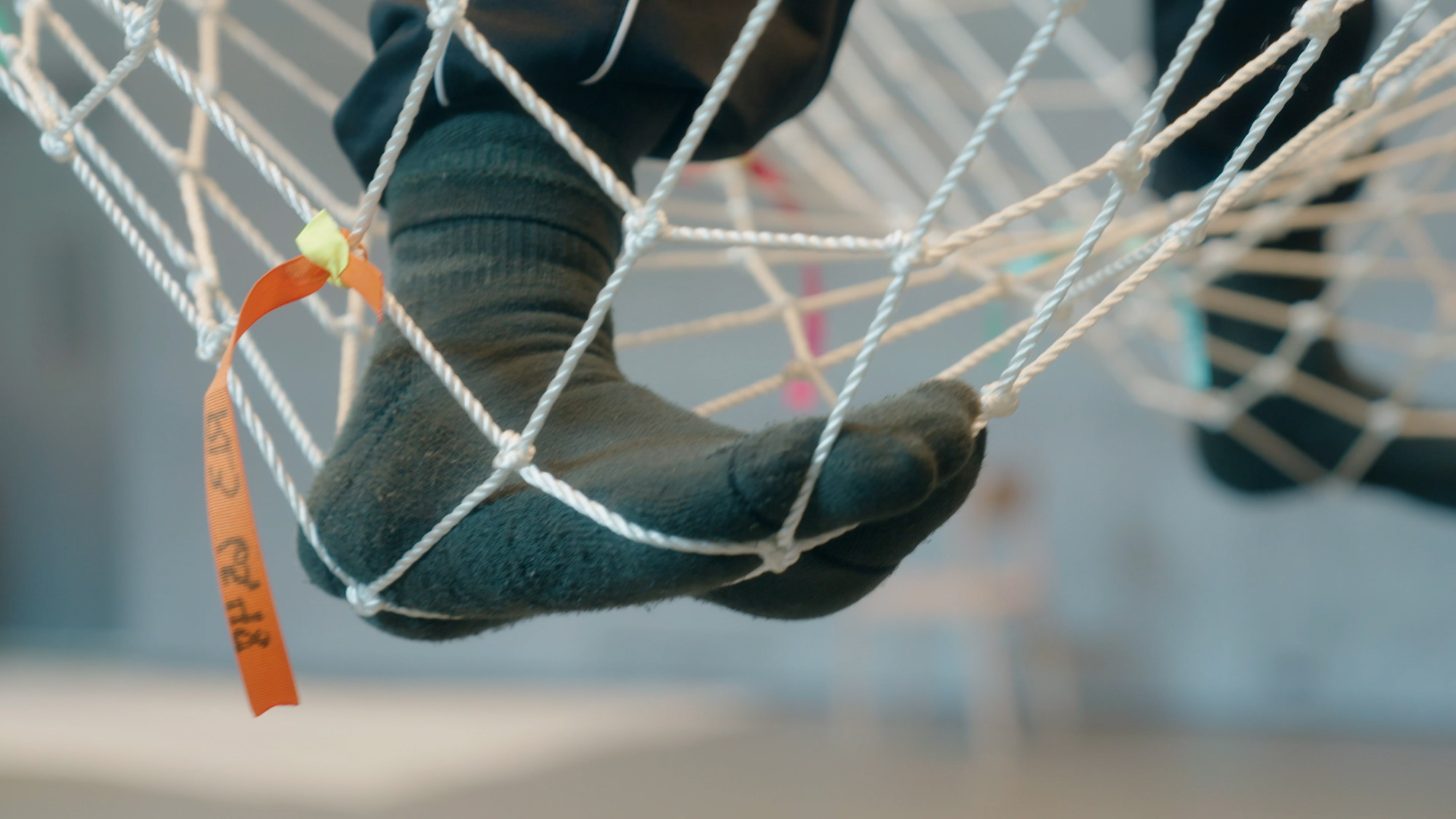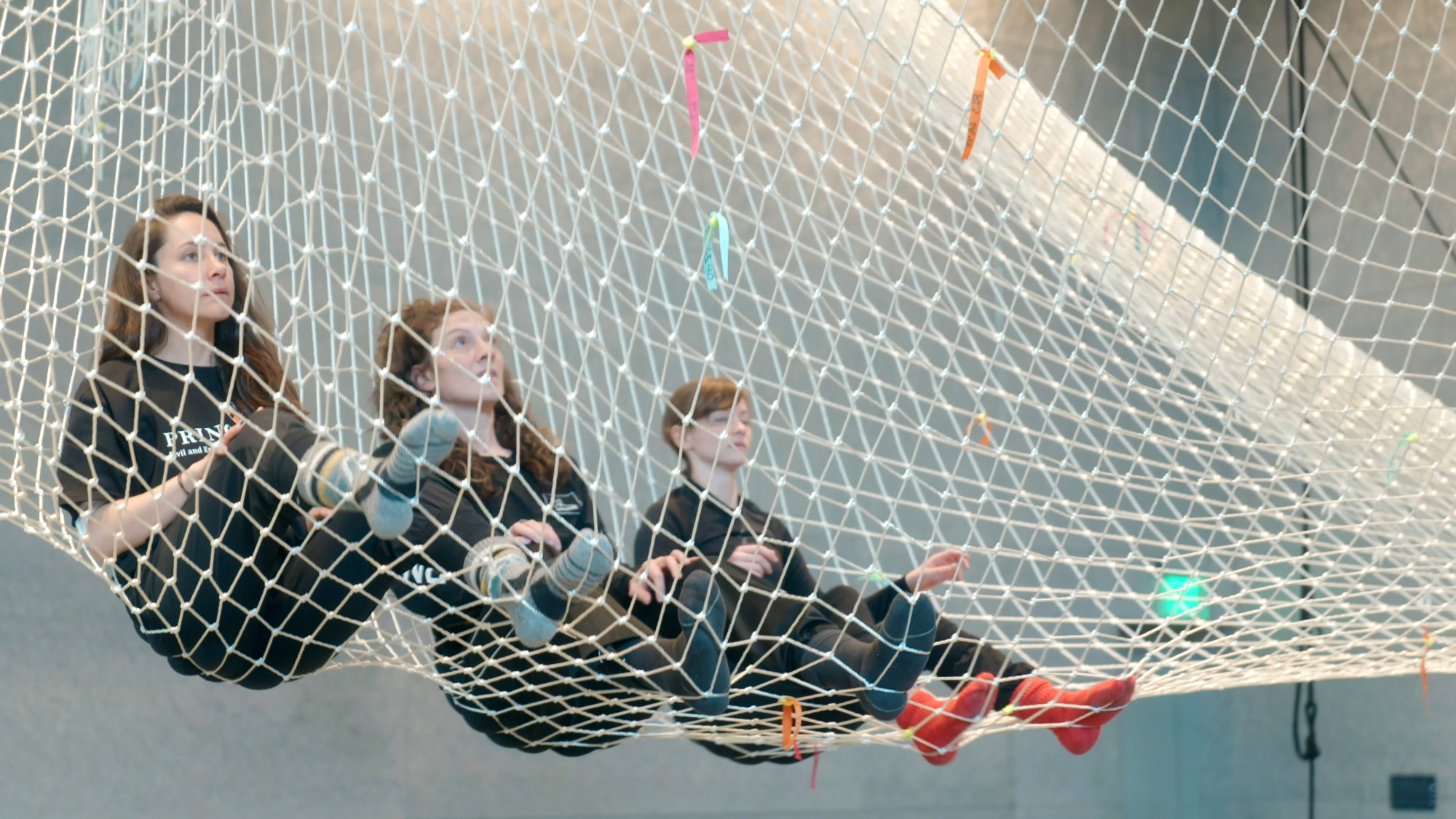How can engineers and dancers stretch the bounds of nets to explore new structural designs and collective ways of moving? In the collaborative experiment “Net tOpologies and Dance Explorations” (NODES), dancers and engineers confront this question head-on, exploring the complexities of large-scale nets and seeking to understand how these structures respond to human movement and dynamic loads.
This interdisciplinary project, spearheaded by Rebecca Lazier, professor of the practice and associate director of the Program in Dance at Princeton University’s Lewis Center for the Arts, Sigrid Adriaenssens, a professor in the Department of Civil and Environmental Engineering at Princeton and director of the Form Finding Lab, and visual artist Janet Echelman, traces its origins to a serendipitous meeting at an Engineering and the Arts symposium in 2018.
“We saw the potential of the artistic expression—the living, human system of the net,” Rebecca explained. “The net was an extension of the body, and plucking a single line can make the whole system move. It also has this layer of how we think about the world we’re in, the earth we’re on. How do we think about our role in these complex systems?”
This shared vision led to subsequent collaborations with architects, engineers, and dancers, exploring dance within net structures through residencies and co-teaching at the University of Washington Architecture Department (2019) and the Atelier Program at Princeton University (2020). NODES gained momentum in 2020 after receiving research funding for the project.
The methodology of NODES relies on practical experimentation and choreographic exploration. Sigrid leads efforts to develop predictive models that capture the nuanced behavior of nets, using mathematical modeling and machine learning techniques. She and Rebecca collaborated to test large-scale models of the nets in performance spaces—an alternative laboratory for engineers to observe how different net configurations impact their mechanics under various loads and configurations.
“We’re interested in studying the behaviors we observe in the nets because very little is known about how they behave. Nets are complex systems that warrant deeper exploration,” Sigrid explained. NODES launched in 2022 during a Princeton engineering residency modeling net movement to improve production safety and design, and catalyzed related engineering publications on the educational aspect of the Atelier course at the Annual Symposium of the International Association for Shell and Spatial Structures conference in 2021 and “Creative tension: how a choreographer and an engineer innovate together,” in 2022.
“People talk about collaboration, but it isn’t often truly about working together to create something that doesn’t yet exist,” Janet remarks. “We are swimming through the dark together. When I engage with my collaborators, I can conceptualize the forces and the structure itself, opening up artistic opportunities to create expressive form.”
An ongoing multidisciplinary performance from this collaboration, “Noli Timere,” is a soaring aerial dance. Eight performers, suspended up to 25 feet in the air, move within Janet’s monumental net sculpture, where every movement reverberates through the intricate web. This project is the first time dancers have moved inside Janet’s sculptures–transforming them into dynamic environments and active collaborators in the choreography. “Noli Timere,” meaning “be not afraid” in Latin, renders interconnectedness visible, demonstrating the delicate balance of our ecosystem as small actions have ripple effects across the world and the potential for profound change through collective action.
In 2024, they are participating in a development residency at PS21 Chatham to integrate a composer and create new choreography. In 2025, they have a residency at MIT Center for Art, Science, and Technology to develop workshops and engagement activities. Noli Timere will premiere at the McCarter Theatre Center in February 2025 and Discovery Green in March 2025.
Experience “Noli Timere” at the McCarter Theatre Center’s Berlind Theatre, February 7th and 8th. Friday the 7th’s performance includes a post-show discussion with creativeX about the arts and engineering collaboration that catylized the work’s early development.


